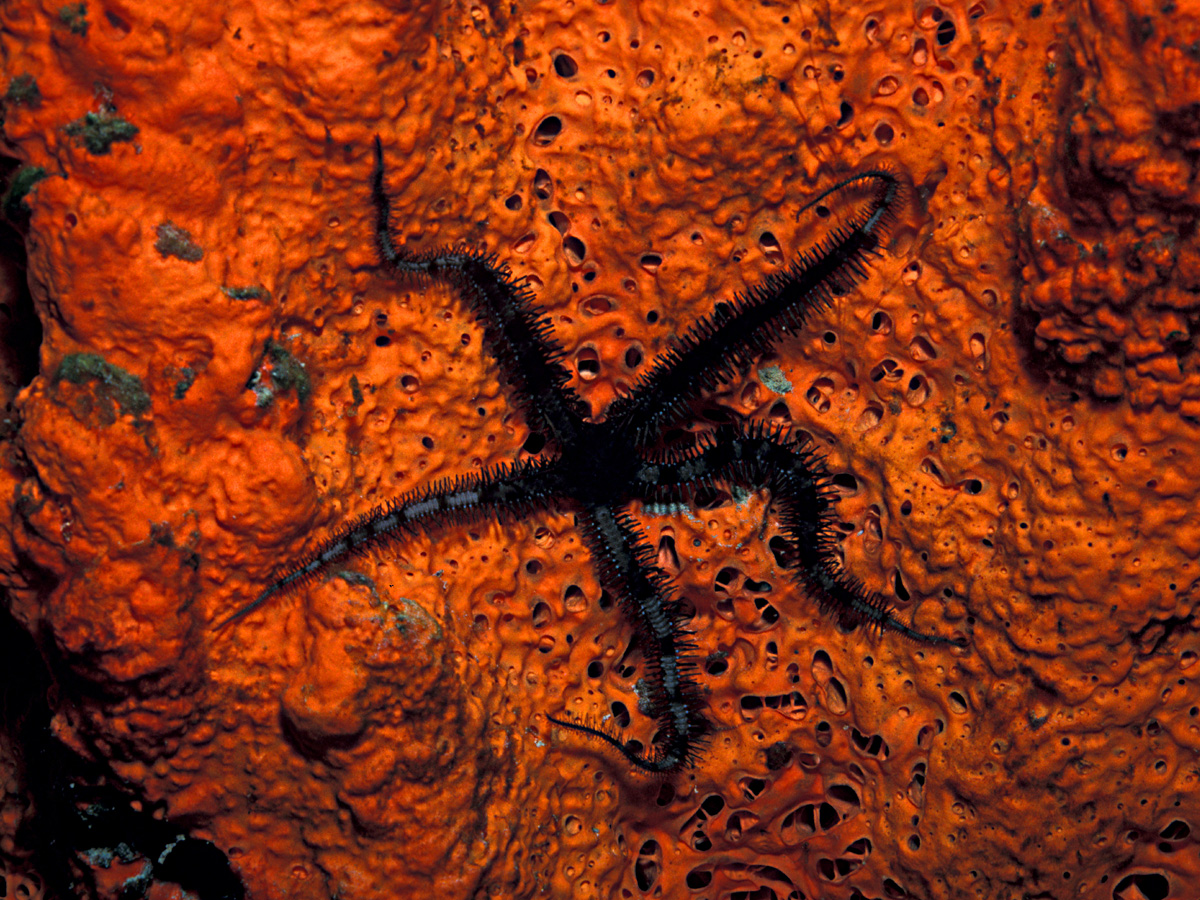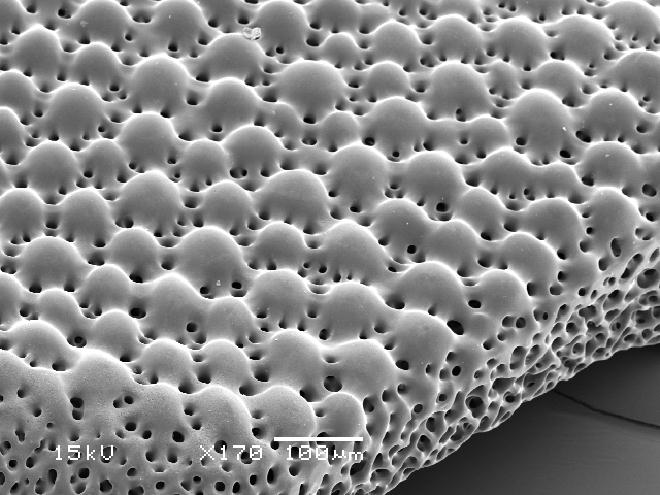Physics in the animal world: ofiuras and their unusual vision

On Geektimes, more than once and not two materials were published about the organs of vision of animals - both existing now and fossils, those that disappeared millions of years ago. This article is a continuation, one might say, of the cycle, since it is also devoted to vision. This time, the material does not consider the eyes, but rather the photosensitivity, susceptibility to the light of unusual animals - ofiur.
Ophiu or snaketails are a class of benthic marine animals of the echinoderms type. Most species have a very unusual method of movement: when an ophiura crawls along the bottom, its rays twist, making snake-like movements. Most of the species of this class live in tropical waters. Despite the fact that the eye as such does not exist among the officers, it somehow can escape from persecution and catch prey. How do they do it? Let's get a look.
To be fair, it should be noted that not all types of light can react to light. Photosensitivity was first found in one species, Ophiocoma wendtii. As it turned out, after a thorough study of this type of ophthalmology, these animals owe their “vision” the ability to isolate small CaCO3 calcite crystals that form spherical microstructures of a two-lens shape. According to the researchers, the stars of this and some other species can form almost perfect microlenses. The crystals form a grid, focusing the light directly into the epithelial tissue of the underlying layers to a depth of 4-7 microns. There the light is caught by the nerve bundles.
')
The study also states that the group of lenses in ophiur has a structure that allows reducing spherical aberration and double beam refraction. This opens up the possibility for Ophiouirs to capture light from a particular direction, rather than from everywhere at once. They have (a number of species have this feature) phototropical chromatophores that regulate the dose of light that reaches the receptors. These microstructures perform both purely mechanical and optical functions.
According to experts , microlenses, which create ofiurs, are so perfect that a person is not yet able to create something similar (this opinion was expressed in 2001 - ed.). Perhaps structures of this kind can be used in optical data transmission systems. They transmit light with almost no distortion. A network of microlenses, according to scientists, transmit a single image, rather than many small ones.
Joanna Eisenberg, an engineer at Bell Laboratories , has been researching and analyzing these microstructures for a long time. She believes that the tiny formations created by the seals "are too much like lenses to be created at random." In other words, Eisenberg believes that these microlenses arose in the course of evolution, and are not a whim of nature, which created an unnecessary system for the organism.
“It seems that this organic creature can use inorganic material for high-precision operations — even though the creature does not have a brain,” says Roy Sambles, a specialist in optics and photonics from the University of Exeter .

Micrograph taken on a scanning electron microscope. In the photo - part of the skeleton of the office of Ophiocoma wendtii with microlenses
Ophiuses inhabit the seabed everywhere , at a depth of 6-8 km. Most occurs at depths of more than 500 m; coral reefs inhabit. Crawling along the bottom by bending the rays or burrowing into the ground. They move in jerks, pulling forward 2 pairs of hands and sharply bending them back. When feeding "hands" ofiur rise almost vertically upwards. In some species, the arms branch out, and the accumulation of the feeding ophiur resembles a real tentacle carpet. Small animals (worms, crustaceans, jellyfish) and suspended particles of food (plankton) get stuck in it or actively captured.
The growth of crystals, according to scientists, should be self-organized, this process is supported by the organism of the oiur and continues constantly. “It all starts with a chemical element soup, and at the end we get an amazing microstructure,” said Semblems. He hopes to repeat the process in the laboratory, which would allow growing crystals of the correct form with an optical axis for various needs of industry and science.
Despite the absence of a brain, ofiur has an extensive nervous system. As mentioned above, the crystals focus light on the tissues of the body, in most cases - on the nerve endings. The brittle body, in fact, is one big eye that allows an animal to “see” its surroundings and react accordingly. Eisenberg compares the process of forming an image with a digital camera that builds a clear picture pixel by pixel.
“It’s strange — I don’t know anything like lenses embedded in a body,” says Michael Land, animal vision specialist at the University of Saxses, UK.
Unfortunately, scientists cannot yet say how good the final image is. But the fact that ophiuses with this organ of vision react to the illumination of the environment and can feel the predators threatening them - there is no doubt about it. To clarify the results of observations requires more experiments.
Source: https://habr.com/ru/post/401053/
All Articles